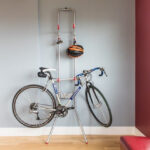Is your electric bike acting up? A common culprit could be the Electric Bike Controller. If you’re experiencing issues with your throttle or pedal assist, or if your e-bike seems unresponsive, understanding the controller’s role and how to diagnose potential problems is the first step towards getting back on the road.
Let’s explore some typical symptoms that might indicate a problem with your electric bike controller. One of the most obvious signs is a lack of response from either the throttle or the pedal assist system. When you engage the throttle or pedal, you expect the motor to kick in and propel you forward. If this isn’t happening, and especially if neither system is working, the controller could be the issue.
Another key indicator is the LED display. Does it power on when you press the power switch? Do the lights illuminate? Can you cycle through different modes as expected? A malfunctioning controller might prevent the display from functioning correctly, or it might show inconsistent or no readings at all. For example, if your display lights up but the walk mode (often activated by holding the mode button) doesn’t engage, this could point to a controller problem. It’s also worth checking the voltage at the throttle or pedal sensor connectors using a multimeter. A healthy controller should supply around 5 volts. Absence of this voltage often suggests a controller failure.
Sometimes, a faulty controller can cause more unusual symptoms. For instance, if your hub motor spins backward when the controller is connected, or if the motor seems to lock up, this could indicate a short circuit. The short could be within the controller’s internal transistors, in the motor cable wiring itself, or even within the motor itself. These more severe symptoms usually require immediate attention and potentially controller replacement.
If you’ve determined that your electric bike controller needs replacing, there are a few things to consider. Unless your system uses a round 9-pin motor connector downstream from the controller, you’ll likely need to splice the connector from your old motor harness onto the new controller. The same might be true for connectors for the brakes, throttle, and pedal assist sensor, depending on the new controller’s plug configuration. A new display unit is generally necessary when installing a new controller to ensure compatibility and proper function.
KT controllers and displays are a popular option, known for their good pedal assist feel and a wide range of compatible displays. With KT controllers, you’ll typically need to remove the old six-pin motor connector from your existing harness and splice it to the new KT controller. Similar splicing might be needed for the pedal sensor, brakes, and throttle connections. When choosing a display, avoid the basic LCD1 model, as it lacks many of the features available on higher-end options like the LCD3, which is a commonly favored display for its versatility. Controller amperage ratings, such as 20A or 25A, should be selected based on your bike’s motor specifications and the physical space available for mounting the controller.
In conclusion, diagnosing issues with your electric bike controller involves checking for common symptoms like lack of throttle or pedal assist, display malfunctions, and unusual motor behavior. Replacement may involve some wiring and connector splicing, and choosing a compatible controller and display system, like those from KT, can be a reliable solution. Remember to prioritize careful diagnosis before replacing parts to ensure you address the root cause of the problem effectively.

